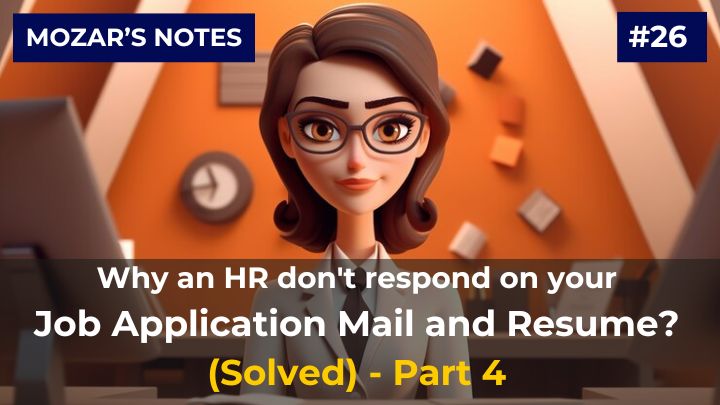
This is the last part of of the series – how to make a perfect resume for Animation and VFX artists. We have covered all the important things till now in earlier 3 parts. Here, we will talk about cover letter and freelance projects.
Two topics mentioned in this part is very subjective. So, add them wisely / as per the job guidelines.
Cover letter
It is a classical case of ‘to do or not to do’. Many people get confused here. So, we will go step by step.
Check out the essential difference.
- Mail body text: It gives generic information about you and mentions the job title that you are applying for.
- Cover letter: It is more specific to your professional credentials and qualifications. Here you explain in brief why your skills and experience match the requirements of the job that you are applying for.
So, you need to modify it always as per the studio requirement or the job vacancy. It is like your ‘sales pitch’ that is why you are the perfect fit for the said job. If you are sending a it, make sure to send it as an attachment.
Does our AVGC industry require a cover letter?
To be honest, the answer is ‘No’.
Ours is a creative industry. Majority of Animation and Post Production Studios don’t give emphasis for it. Because, if you don’t know how to draft it properly, the ‘mail body text‘ and ‘cover letter’ both will have same and overlapping contents.
Why you should not waste your time for making it?
- An irony to mention nonetheless – it is hardly opened and read. So, it is better that you mention all key highlights and major credentials in the ‘mail body text’.
- Every HR or hiring manager will read the resume first. If it is not fit as per their requirement, they will not even bother to read it.
- An impressive write-up in it can’t increase the value of your resume.
- In big organizations, your mail gets forwarded to different departments. In such trail mail, the it might get lost.
- For a busy HR, two attachments (cover letter and resume) might be annoying.
- Your ‘mail body text’ and resume gives all the essential details. So, practically, no one cares to read it.
So, provide it only if the job listing explicitly asks for it. Otherwise, attach only your latest resume to get response from HR.
Freelance projects
Mentioning your freelance work in your resume is like a two sided sword, with its own good and bad sides. Here are some insights to for you.
Pros of showing freelance projects in your resume
- It shows your leadership skills. It shows your multidisciplinary skills that you can do versatile work and handle clients.
- It demonstrates your adaptability to do business communications with Animation and VFX studios as well.
- It shows your excellent technical skills that can deliver the project on time.
- If you have gaps in regular studio jobs, it can be your savior.
- It gives you better portfolio / demoreel.
Cons of showing freelance projects in your resume
- If you take long or unplanned long leaves, it might hint seniors that you are engaged in freelance projects. It will show your unprofessional behaviour, that you are still on payroll of a studio but not dedicated to it.
- Majority of freelance projects are done without legal documentations or formal contracts. So, verifications of your such claims becomes challenging.
- Not all your freelance works can add a value to the job that you had applied for. Showing all of them create clutter.
So, it is your call to add it in your resume or not. In case, you are mentioning it, do make a separate heading titled ‘Freelance projects’ and show all your relevant projects at once.
